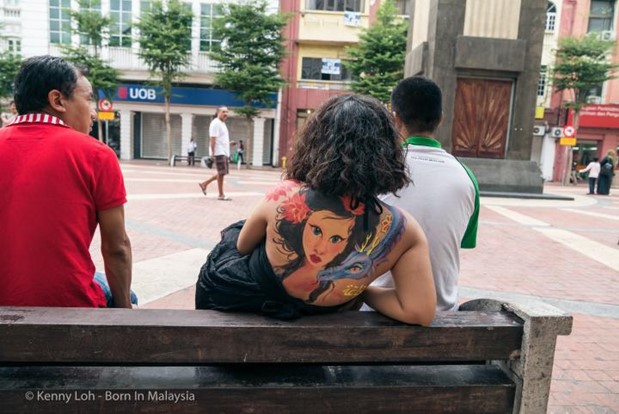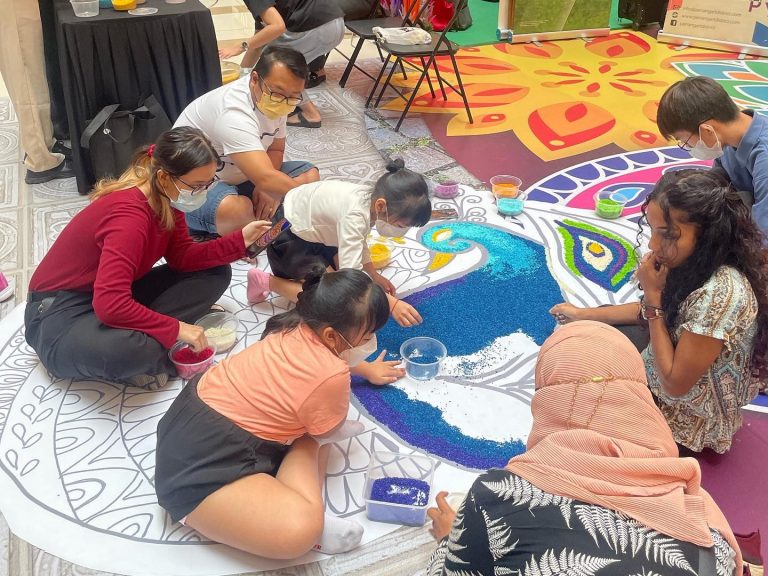In engaging in discussions around arts and culture, we often transplant the ethical dilemmas of cultural appropriation and appreciation from Western ideas into our local context without sufficient introspection. Between “Muhibah defenders” and the “Social Justice” brigade, how can we find a middle ground?
By Kevin Bathman
“For Fanon, culture is not some aesthetic artefact, but an expression of history, the foundation of liberation, and a means to resist domination. At heart, culture is subversive.” (Culture, Power and Resistance, Firoze Manji, 2017)
When I was approached to contribute a piece about cultural appropriation and appreciation in Malaysia, I hesitated. I knew this topic would ignite heated debates, with each side standing firm in their convictions. However, delving into the intercultural exchange of ideas and art forms, particularly in our local performing arts, made me realise the complexity of the issue.
A prominent philosopher of French-West Indian heritage, Fanon’s quote resonates deeply to encapsulate how culture goes beyond mere aesthetics to embody history and resistance. Before 2020, my identification as part of the Malaysian diaspora significantly enriched my perspective. Having resided in Australia for 15 years, I had the opportunity to gain insight into how cultural appropriation operates in that society. This experience allowed me to make valuable comparisons with how the issue is understood within the local Malaysian setting.
In Malaysia, it’s common to witness students from diverse cultural backgrounds engaging in activities such as Chinese fan dances, Boria, Indian dances, tarian lilin, and more. However, this involvement often reflects a surface-level appreciation of these cultural traditions.
Culture reflects a group’s history, struggles, and collective memory. However, as we engage in discussions and sometimes incorporate Western ideas, we often transplant the ethical dilemmas of cultural appropriation and appreciation into our local context without sufficient introspection.
The ensuing debates, primarily unfolding on social media, create divisions between the “Muhibah defenders” and the “Social Justice” brigade, both ardently advocating for their positions.”
The “Muhibah defenders” highlight our region’s centuries-old history of intercultural exchange, arguing that cultural appropriation rules don’t apply in Malaysia. On the flip side, the “Social Justice” brigade contends that appropriation dishonours cultures and perpetuates power imbalances.
But can we find a middle ground? It’s not about being right or wrong; both sides have valid points. The issue is far more intricate, tied to understanding power dynamics within society.
Amidst our passionate arguments, we fail to listen to each other, as we are fuelled by irresponsible media sensationalism. Instead of debating labels, we need to shift our focus to “cultural power”. This term delves into the core issue, capturing its complexity and offering a more nuanced perspective.
Cultural power acknowledges that imbalances exist. It’s not just about sharing, but recognising that dominant cultures dictate what’s acceptable while minority cultures face erasure or stereotypes.
In my role as a Creative Producer and Curator, I must remain acutely attuned to cultural power dynamics. It requires an ongoing evaluation of the dynamic between the community members I collaborate with and myself.
To commemorate the Penang Harmony Celebration and in addressing the ethical challenges related to appropriation, appreciation, and power dynamics, I intend to present five hypothetical scenarios. Subsequently, I will address the ethical queries that arise from these scenarios, focusing on the art of navigating them without incurring the label of a “culture vulture” or being accused of cultural appropriation within our local context.
Positionality in society
Scenario 1: A well-established Malay film director contemplates approaching a Malay actor for the pivotal role of a Malaysian Indian community hero in a local historical drama. The director considers using makeup to darken the actor’s complexion to more closely match the actual skin tone of the freedom fighter, aiming for a more authentic portrayal.
Ethical queries: The film director must reflect about whether they are occupying a space and employment opportunity that might otherwise belong to a local Malaysian Indian actor. Could there be a Malaysian Indian actor who not only resembles but can more authentically depict the historical figure? Is there someone else deserving of this chance who might historically have been marginalised? Furthermore, the director should ensure they approach the cultural content of a culture different from their own with the necessary sensitivity.
Collaboration vs competition
Scenario 2: An up-and-coming Malaysian Indian writer expresses a keen interest in documenting the customs and way of life of an Orang Asli community through interviews with its members. While the writer intends to credit the interviewees in the book’s acknowledgements, they plan to have sole authorship credited on the cover.
Ethical queries: The writer should contemplate whether they are the most suitable person to narrate the stories of this Orang Asli community. Are they confident in portraying the culture of marginalised communities as authentically as possible? Have they made adequate efforts to identify writers within the community itself? If unable to locate suitable writers, have they considered the possibility of mentoring emerging writers or sharing cover credit? Additionally, have they explored the option of having the stories initially composed by an Orang Asli writer in their native language, followed by translation into the preferred language medium?
Prioritising authenticity above all
Scenario 3: A Malay theatre director is creating a modern adaptation of a traditional Kadazan folklore play but intends to make significant changes to the storyline and characters to make it more appealing to contemporary audiences.
Ethical queries: The director should carefully consider whether these adaptations honour the cultural significance of the original folklore. Have they actively engaged with local indigenous communities to grasp the story’s deeper meaning and contemporary relevance? Is there potential for collaboration with indigenous storytellers or artists to ensure authenticity and cultural sensitivity throughout the adaptation process? Furthermore, they must assess whether they are respecting the intellectual property rights of these communities. Could their platform be used to uplift and support indigenous artists and designers instead of solely profiting from their work?
Conduct thorough research
Scenario 4: A mid-career Malaysian Chinese choreographer envisions a fusion dance performance that melds elements from Bharatanatyam with traditional Chinese dance. The choreographer intends to exclusively feature Malaysian Chinese dancers who will mimic Bharatanatyam movements in the production.
Ethical queries: The choreographer should contemplate whether they have invested time in comprehensively understanding the culture and art form they are incorporating. Have they delved into the history, significance, and contextual nuances of Bharatanatyam, including a grasp of its customs, traditions, and underlying symbolism? Furthermore, they should question their choice not to collaborate with and centre an authentic Bharatanatyam dancer in the performance.
Consistently review ethical responsibilities and consideration
Scenario 5: A cultural organisation in Malaysia is organising a storytelling festival that celebrates the oral traditions of various ethnic groups, encompassing Malays, Chinese, Indians, and indigenous communities. The festival features storytellers from each of these groups performing their traditional tales.
Ethical queries: The cultural organisation should prioritise offering storytellers from each community to present their narratives in a way that genuinely represents their own culture and traditions, without distortion or misrepresentation. It is crucial to ensure that the audience can understand and appreciate stories that are presented in languages they may not be familiar with. This can include providing translations in the program, offering live interpreters during performances, or providing supplementary materials like booklets or websites with translations. Additionally, they must explore ways to foster cross-cultural understanding while actively avoiding the risk of misappropriation.
Rethinking the Cultural Appropriation and Appreciation Debate
What can we glean from these scenarios? It’s evident that each scenario demands careful analysis; it’s not black and white. Creatives and event producers must consider these factors in their projects. As arts supporters, we should ponder about cultural power in such situations. Finally, Malaysians must remember that unity is not achieved by homogenising differences but by honouring the rich histories, struggles, and memories that each culture contributes to our shared Malaysian identity.
Kevin Bathman is a creative producer, curator, and communications specialist who is passionate about advancing social change through creativity to create long-term social transformation. With an MA in Cultural Studies, some of his local community arts projects include Chindian Diaries, Project Future Malaysia and Kembara Stories.
Cover photo: Model Sharifah Nabila photographed by Kenny Loh for Born in Malaysia: A Story of Kuala Lumpur. Conceptualized and body painted by Rupa (www.skinandsoul.art).


